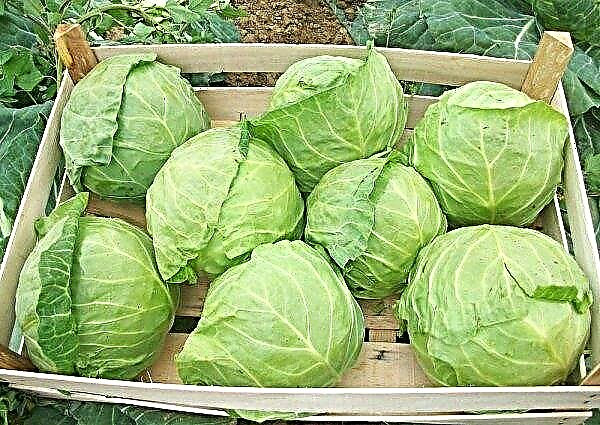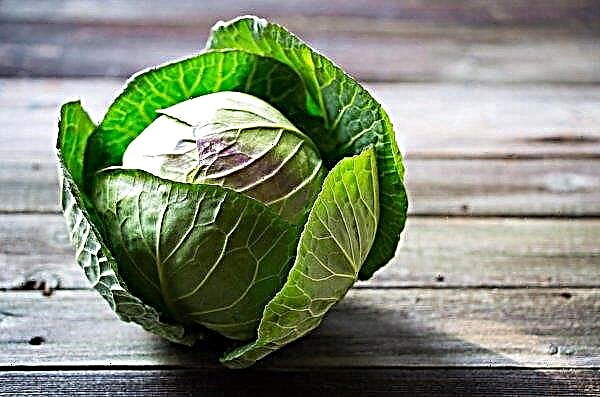Carrots contain many useful elements and have excellent taste characteristics, therefore, it is used in cooking not only fresh, but also as an ingredient in a variety of dishes. But for certain categories of people, the influence of this root crop on the indicator of sugar in human blood is no less important. This value is characterized by a special number - the glycemic index. This article provides a description of this value for carrots, lists the useful and harmful characteristics of the root crop, as well as the rules and features of including a vegetable in the diet of a diabetic.
Glycemic index of carrots
Glycemic index (abbreviated GI) is a conditional value that characterizes the rate of processing carbohydrates in the body and allows you to determine how quickly the amount of sugar in a person’s blood will increase after consuming a particular product. The level of insulin in the blood directly depends on this indicator, therefore it is especially important for diabetics and people who are overweight to know it.
The glycemic index scale consists of 100 units (from 0 to 100), while the maximum value of 100 units corresponds to GI of glucose - it is taken as a standard. It is with this value that the rate at which the body breaks down carbohydrates in all other products is compared.Did you know? The term "glycemic index" was introduced in 1981 by a doctor and scientist David Jenkinson from Canada.
The glycemic index of carrots can range from 35 to 90 units. It depends on whether the root crop is used raw or undergoes heat treatment.
Raw
The GI for raw carrots is 35 on average. Many different external factors influence this value, so the GI of fresh root vegetables may fluctuate slightly.
The glycemic index of raw vegetables depends on:
- root varieties - fruits of different varieties differ in taste characteristics and may contain a different percentage of carbohydrates;
- maturity - ripe root crops have higher GI than unripe;
- product shelf life and conditions - Fresh and juicy fruits stored in a darkened cool place contain more sugar;
- vegetable growing conditions - GI can fluctuate depending on the geographical location of the crop growing area, soil characteristics and fertilizers used.

Boiled
During the heat treatment of the root, its dietary fiber is destroyed, resulting in an increase in its glycemic index. Heat-treated vegetables have a GI of 75 to 85 units.
The exact value of this indicator for the prepared fruit depends on many factors:
- the size of the slices of vegetable - the smaller the sliced boiled or baked carrots, the higher its GI. For carrot puree GI = 85, and for a whole baked root vegetable GI = 70;
- cooking method - GI of fried root vegetables is higher (about 85 units) than boiled or stewed;
- Vegetable products - most often a thermally processed vegetable is eaten with lean meat or fish;
- food temperature at the time of serving - Carbohydrates are most quickly absorbed from a cooled dish, and the GI of hot boiled carrots will be slightly lower.

Carrot juice
Freshly squeezed concentrated carrot juice has a GI = 45. This indicator significantly exceeds the glycemic index of raw root crops, since in liquid form glucose is absorbed faster by the body. Therefore, people with diabetes and overweight problems are advised to limit their intake of fresh carrot juice and be sure to dilute it with water to reduce the concentration of carbohydrates in the drink.
Important! The exact GI for carrot fresh depends on the same factors that affect the GI of fresh root.
The chemical composition of carrots
This root crop contains a lot of useful components. A rich chemical composition is characteristic of fresh carrots, but, according to nutritionists, boiled and stewed root crops are more useful, since during the heat treatment they significantly increase the number of antioxidants.
The calorie content of fresh carrots is 35 kcal.
The nutritional value of 100 g of the product is presented below:
- carbohydrates - 6.9 g;
- proteins - 1.3 g;
- fats - 0.1 g;
- water - 88 g;
- dietary fiber - 2.4 g;
- ash - 1 g;
- organic acids - 0.3 g.

The chemical composition of the root crop includes such components:
- vitamins that positively affect the functioning of various organs of the body - A, B1, B2, B4, B5, B6, B9, C, E, H, K, PP, as well as beta-carotene;
- digestible carbohydrates - starch, monosaccharides, glucose, disaccharides, sucrose, fructose;
- basic macrocells, which are the building material for all tissues of the human body - potassium, calcium, magnesium, silicon, sulfur, sodium, phosphorus, chlorine;
- useful trace elements that are actively involved in various biochemical processes - aluminum, boron, iron, iodine, manganese, copper, fluorine, zinc, etc .;
- essential amino acids that are not synthesized in the human body on their own and can only be obtained with food - arginine, isoleucine, leucine, lysine, methionine, cysteine, threonine, tryptophan, etc .;
- interchangeable amino acids that require a significant amount of time for independent synthesis in the body - alanine, aspartic acid, glycine, glutamic acid, tyrosine, etc .;
- saturated fatty acids;
- polyunsaturated fatty acids necessary for the body - Omega-3, Omega-6.
Useful properties for the body
Due to its rich chemical composition, carrots have a beneficial effect on the human body, therefore, this root crop is recommended to be added to the diet in order to overall strengthen the body.

The main beneficial properties of carrots are listed below:
- stimulates metabolic processes and accelerates the breakdown of nutrients;
- helps to get rid of toxins;
- increases resistance to immunity to infections;
- prevents the development of malignant tumors;
- stimulates digestion;
- cleans the kidneys from sand and small stones;
- has a beneficial effect on the heart;
- maintains the tone of the body and provides it with energy;
- has a calming effect on the nervous system;
- accelerates skin regeneration and promotes wound healing.
A popular dish in which all the useful properties of the fruit are maximally preserved is Korean carrots. This appetizer not only has a piquant taste, but also significantly improves digestion, and also effectively dilates blood vessels.Did you know? In cooking, you can use not only the root of carrots, but also its green tops, adding leaves to first courses, salads and sauces.
Can I use carrots and carrot juice for diabetes?
Diabetes mellitus refers to endocrine diseases and can occur in any person under the influence of various factors. Its essence lies in the problematic absorption of glucose by the body, which is observed as a result of the fact that insulin ceases to function - the hormone responsible for the breakdown of blood sugar.
According to the generally accepted classification, diabetes mellitus is divided into 2 types. Each of them has its own causes and treatment methods, but in both cases, patients are prescribed a special diet, which is designed to reduce the amount of carbohydrates in the diet.

Carrots contain a significant amount of dietary fiber, which slows down the breakdown of glucose and has a beneficial effect on metabolic rate. This prevents the occurrence of sudden jumps in insulin in the body, so this root crop is recommended to be added to the diet menu for diabetes. But at the same time, it is necessary to observe the measure and follow certain recommendations, depending on the type of this disease.
Features of carrots in the presence of the 1st type of this disease are listed below:
- You can eat baked vegetable (2-3 pieces per day);
- it is permissible to add a little chopped root in the preparation of stewed meat stew;
- You can eat a raw product, but not more than 3 medium-sized root crops per day;
- in fried form, it is permissible to use a vegetable with fish, adding a small amount to the dish during cooking.
For diabetics with type 2 disease, there are separate recommendations for eating carrots:Important! For diabetics, the total amount of carrots consumed per day is no more than 200 g, and carrot fresh - up to 250 ml per day.
- about 4 times a week you can eat boiled vegetable puree;
- it is allowed to use baked root vegetables (every 2 days) as a side dish;
- a raw vegetable may be present in the daily menu of a diabetic every day - 1-2 medium fruits are allowed to be eaten;
- in fried form, it is not recommended to use the product, as this contributes to the rapid gain of excess weight.
All diabetics should have carrot juice in their diets. It improves the chemical composition of the blood, reduces the rate of breakdown of carbohydrates and counteracts the rapid absorption of glucose.

The following are basic guidelines for drinking this drink for diabetes:
- for the preparation of juice, it is recommended to choose bright orange juicy root vegetables of the correct form;
- the resulting fresh drink should be diluted with the same amount of chilled boiled water;
- to prevent irritation of the gastric mucosa, it is better to drink carrot juice after eating, and not on an empty stomach;
- It is recommended to prepare the drink immediately before use to preserve all the nutrients in it.
General diabetes carrots are listed below:
- for the preparation of any dishes you need to use young vegetables, since they contain a maximum of vitamins;
- for stewing and frying, it is desirable to cut the fruit into large pieces - in this form, it loses fewer useful elements during cooking;
- It is recommended to cook carrots in a peel without cutting it into parts to preserve all the vitamins. After boiling the root crops, it is necessary to douse with cold water, and then clean;
- for frying carrots you need to use the least amount of vegetable oil;
- it is recommended to cook root crops no more than 1 hour, and stew and fry - about 10-15 minutes;
- For better storage, carrots can be frozen by placing it in the freezer.

Contraindications and possible harm
Carrots help to enrich the body with essential nutrients. But when consumed in large quantities, it causes a significant increase in vitamin A in the blood. This leads to an overdose and can cause a negative side reaction in the form of dizziness, nausea, yellowing of the skin and an allergic rash.
Important! The daily dose of carrots for an adult healthy person - 3–4 medium-sized fruits, and for children - no more than 1 root crop.
- Contraindications to the use of this vegetable are listed below:
- diseases of the stomach or intestines (ulcer, gastritis and other inflammatory processes) - the product contains substances that irritate the mucous membrane of the digestive system;
- an allergy to root crops - may manifest as nausea or a rash;
- large stones in the kidneys - the use of root vegetables can cause the movement of large stones in the urinary canal and clog it;
- impaired liver function - the vegetable contains a lot of beta-carotene, therefore, with diseases of this organ, the body is difficult to process this substance.
Carrots can be a useful and tasty addition to the daily diet, and even people with diabetes can eat it in limited quantities. Knowing the glycemic index and properties of this root crop, you can use it in food with maximum benefit.












